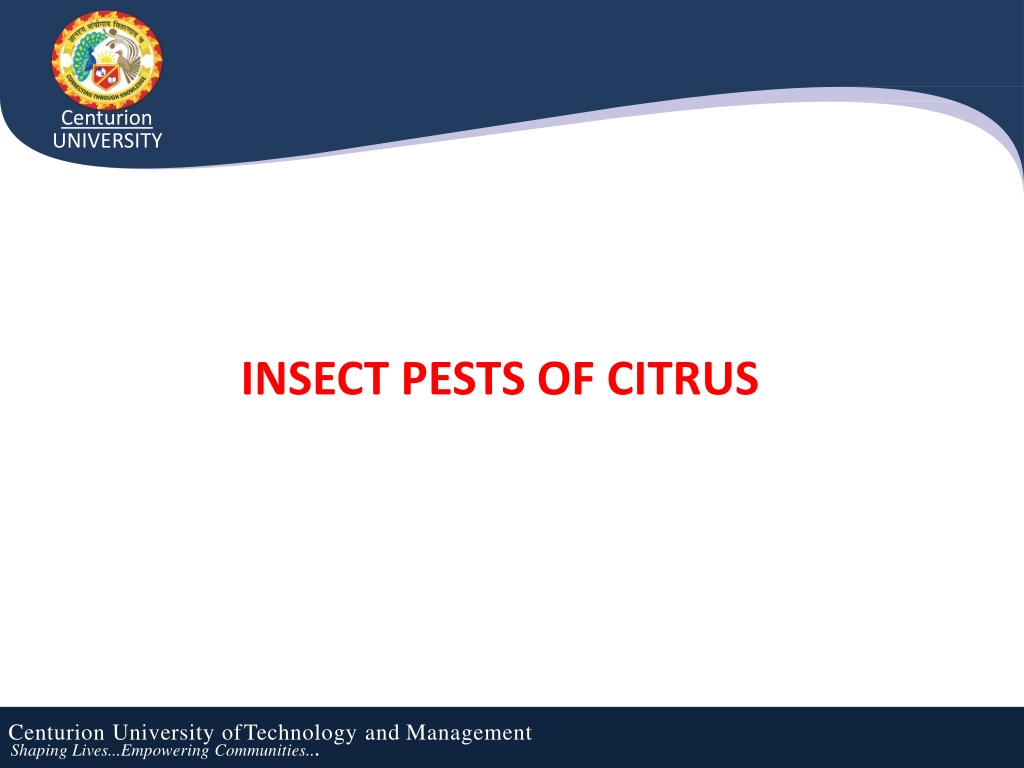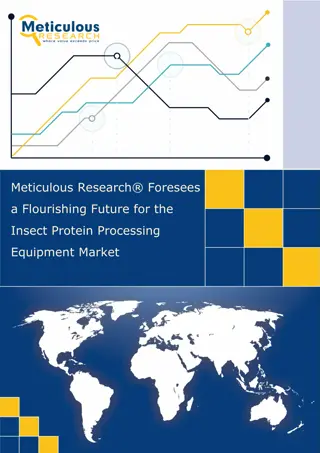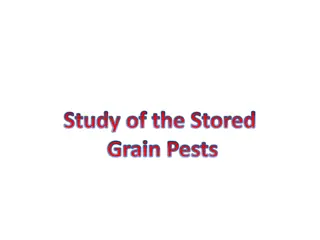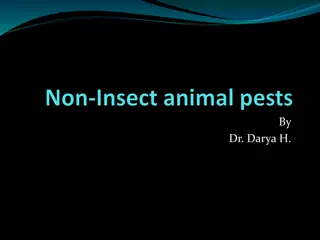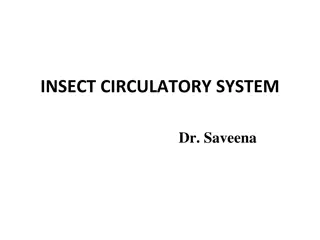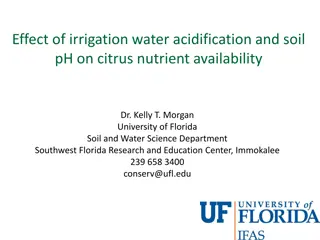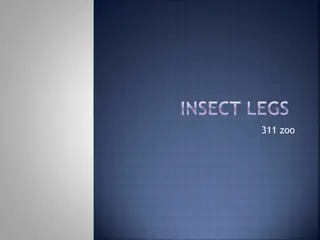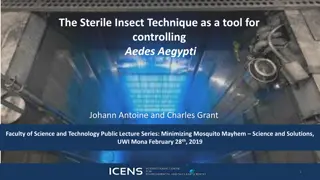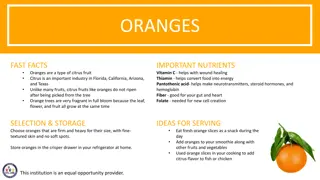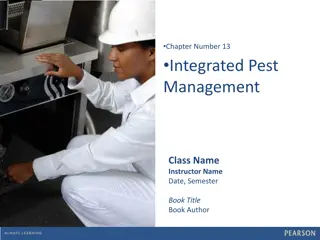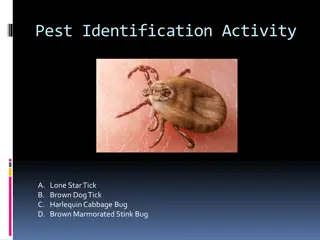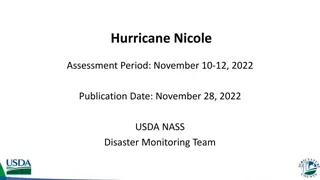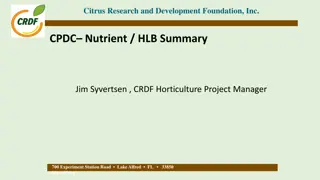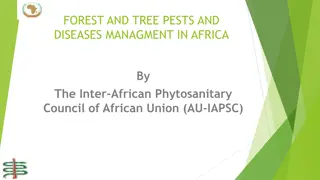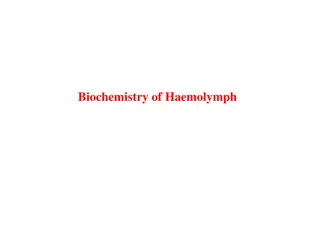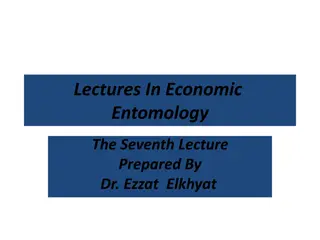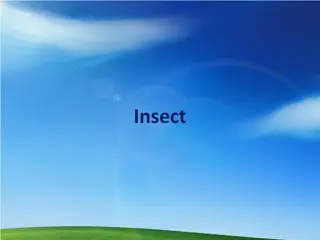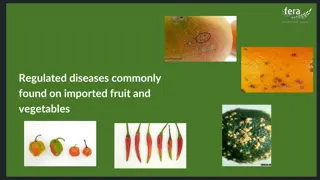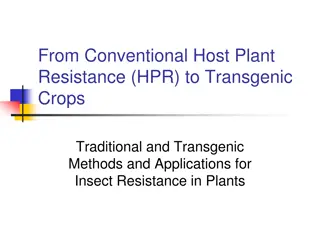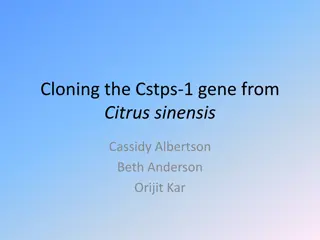Insect Pests of Citrus: Identification, Behavior, and Management
Insect pests such as citrus butterfly, fruit-sucking moth, leaf miner, rust mite, and bark-eating caterpillar pose significant threats to citrus plants. These pests can damage citrus seedlings and various fruit varieties. Understanding their appearance, distribution, life cycle, and management techniques is crucial for effective pest control in citrus orchards.
Download Presentation

Please find below an Image/Link to download the presentation.
The content on the website is provided AS IS for your information and personal use only. It may not be sold, licensed, or shared on other websites without obtaining consent from the author. Download presentation by click this link. If you encounter any issues during the download, it is possible that the publisher has removed the file from their server.
E N D
Presentation Transcript
Centurion UNIVERSITY INSECT PESTS OF CITRUS Centurion University ofTechnology and Management Shaping Lives...Empowering Communities...
Common name Scientific name Family Order 1. Citrus butterfly Papilio demoleus, Papilio polytes, Papilio helenus Papilionidae Lepidoptera 2. Citrus fruit sucking moth Eudocima materna, E.fullonica, E.ancilla Noctuidae Lepidoptera 3. Citrus leaf miner Phyllocnistis citrella Gracillaridae Lepidoptera 4. Citrus rust mite Phyllocoptruta oleivora Eriophyidae Acarina 5. Citrus bark eating caterpillar Indarbela tetraonis I. quadrinotata Meterbellidae Lepidoptera
CITRUSBUTTERFLYPapiliodemoleusPapiliopolytes Papiliohelenus Papilionidae: Lepidoptera DISTRIBUTION: These are most destructive pests of citrus seedlings. This pest is widely distributed in Burma, Bangladesh, Sri Lanka, India and Pakistan. It infests almost all citrus varieties though Malta (Citrus sinensis) is its preferred host. It can feed and breed on all varieties of cultivated or wild citrus and various other species of family Rutaceae. Besides citrus, it also attacks ber, wood apple, curry leaf.
APPEARANCE: P.demoleus is a big beautiful butterfly with yellow and black markings on all the four wings Its hind wings have a brick red oval patch near the anal margin and there is no tail like extension behind though common in Papilionidae. Freshly hatched caterpillars are dark brown and soon develop irregular white markings on their body resembling bird s drop. The full grown caterpillar is deep green and cylindrical in form and measures about 40-50 mm in length with a hump in front and has a horn like structure on the dorsal side of the last body segment.
When the caterpillar is disturbed, it pushes out from the top of its prothorax a bifid, purple structure called osmeterium which emits a distinct smell
LIFE CYCLE: Yellowish white, round, smooth eggs are laid singly on tender leaves and shoots by P. demoleus. Egg hatches in about 3 8 days. The larval duration varies between 11 40 days. Pupation takes place on plant parts. Pupa which is a chrysalis is seen girdled by a fine silken thread on a twig of the plant. Adult emerges in a week in summer and in 12 20 weeks in winter. Hibernation is in pupal stage and there are 2-4 overlapping generations per year.
SYMPYOMS OF DAMAGE: The caterpillars feed voraciously on tender leaves right up to the mid ribs and defoliate the entire seedlings or the tree leaving behind the only midribs. Thus the symptom of damage is Leaves fed up to midribs
MANAGEMENT: In small orchards and nurseries with mild infestation, hand picking and destruction of various stages of the pest. Natural enemies enumerated below suppress the pest population Egg parasitoids: Trichogrammaevanescens;Telenomus sp. Larval parasitoid: Distatrixpapilionis;Brachymeria sp. Pupal parasitoid: Pterolus sp. Spraying of monocrotophos 1.6 ml/l or dichlorvos 1 m/l or methyl parathion 2 ml/l when the caterpillars are small. B.t. formulation HALT at 9 g/l is also recommended.
CITRUSFRUITSUCKINGMOTHS Eudocimamaterna,Eudocimafullonica, Eudocimaancilla Noctuidae: Lepidoptera DISTRIBUTION: This pest is distributed in Australia, China, Japan, Korea, Philippines, Hawai, Thailand etc. Besides citrus, it also attacks grapes, apple, castor, ber, pomegranate, guava etc. APPEARANCE: E.materna: The moth has brownish black forewings with a white stripe and yellowish hind wings with a circular black spot in the middle.
SYMPTOMS OF DAMAGE: *****This is the only group where the adult moths are harmful and damage the citrus fruits. Moth pierces the ripe fruit with its strong proboscis and sucks the sweet juice. The feeding injury opens way for invasion of bacteria, which makes the fruit rot around the punctures and drop prematurely Achaeajanata moth also sucks the juice from the unripe fruits. The damage results in Premature dropping of fruits. Rotting at the site of feeding injury
